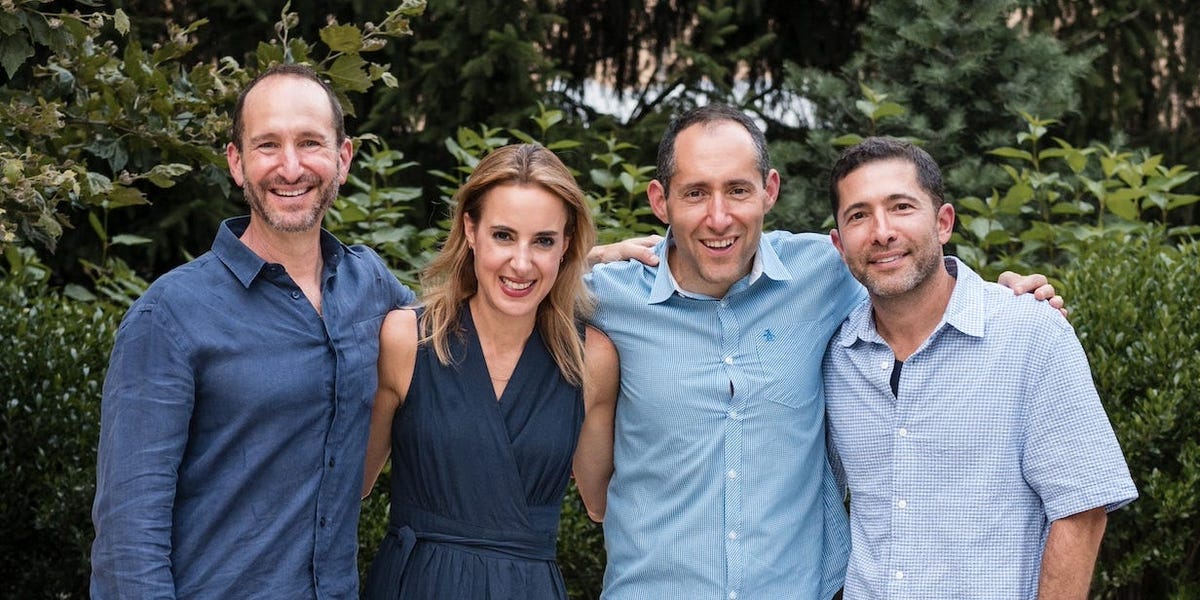While many firms sit out this fundraising season, Founder Collective is taking the wraps off a new fund. The firm has raised $95 million for its fifth and largest fund, Founder Collective tells Insider exclusively. The fund’s size represents a modest 12% increase from the last vehicle it closed in 2020, though a spokesperson for the firm said that with inflation it nets out to roughly the same size.
In keeping with the firm’s thesis, the four investment partners are the single-largest limited partner in the fund, a structure they say gives them range to run the shop as they see fit. It also gives them more skin in the game.
“Being our own largest investor does empower us in some ways to have a longer view. It also empowers us to worry more about the performance of the fund than management fees,” Eric Paley, a managing partner of Founder Collective, said during a video call from his office in Cambridge, Massachusetts.
Sapphire Partners also became an investor in the fund, alongside existing limited partners like Cendana Capital and Foundry Group.
Founder Collective’s new fund comes during a bleak time for the venture market. Emerging managers are struggling to raise funds as their limited partners fall back on brand names. There are whispers of layoffs hitting established firms. Even Andreessen Horowitz’s announcement that it’s raising a set of funds only 17% larger than its previous pair has PitchBook News’ Marina Temkin sounding the death knell for even larger mega-funds.
While it’s not the splashiest shop, those in the know know Founder Collective has quietly built one of the most successful venture-capital franchises on the East Coast. It invests across sectors and has exited nine billion-dollar companies including The Trade Desk, an adtech company that went public in 2016, and PillPack, which Amazon scooped up in 2018. It also has stakes in privately held Airtable, along with Whoop, SeatGeek, Verkada, and Shield AI, an eight-year-old defense software startup that flew to a $2.7 billion valuation in an October round of funding.
It’s a firm that has enjoyed more interest from limited partners than it has capacity in its funds, according to Beezer Clarkson, who leads Sapphire’s fund investing strategy. For years, she said she closely watched the deals they led and the ways they contributed to the ecosystem, through events and thoughtful essays, before she pounced on an invitation for Sapphire to invest in fund five.
“You kind of practice the art of hanging around the hoop, and when the stars align you say ‘thank you’ and are grateful,” Clarkson said.
Founded in 2009, Founder Collective started as a bloc of founders and investors pooling their money to invest in startups. Within the first year Paley wrote a $95,000 check into Uber which ended up returning fund one many times over. Meanwhile his partner David Frankel led the firm’s investment in Coupang, South Korea’s answer to Amazon, which later went public at a $60 billion valuation. Those deals and others earned the partners recognition on the Forbes Midas list, with Frankel ranking 11th this year.
The partners could have gone on to supersize their funds, especially as capital becomes increasingly concentrated into a few hundred mega funds around the world. Bigger funds mean larger management fees, so partners can pay themselves more and hire support staff. But unlike most of its rivals, Founder Collective has stayed lean by design.
Fund size is a forcing function — a smaller fund means the investor only has enough cash to participate in small rounds of funding, which are typically raised by young companies. Founder Collective has always been ruthlessly focused on the seed stage, where investors take the biggest risk in pursuit of the highest returns. And so the size of its latest vehicle tells founders it’s staying the course.
The firm is also able to curb fund sizes because it forsakes pro rata rights, meaning it doesn’t keep its initial ownership percentage in subsequent rounds. It resisted the temptation to raise an opportunity fund in the go-go days of the pandemic, as firms like Susa Ventures, Felicis Ventures, and Y Combinator cranked out growth funds.
Founder Collective’s discipline, according to the partners, keeps it aligned with the founder.
Amanda Herson, the fourth partner at Founder Collective, said it avoids “signaling risk” in the market. Like when a multistage firm leads a seed round for a startup and doesn’t join a subsequent round, other might take the firm’s absence as an indication the startup is backsliding.
“Because the market knows that we will never lead a series A, we can represent a founder’s best interests,” said Herson, who joined the firm as a principal in 2020.
This strategy might nudge the founder toward a term sheet that provides less capital than other offers, but gives the founder access to an investor with a desirable network.
Sometimes an investor will egg on a founder to raise “the most money they absolutely can at the highest possible price,” Paley said, so the investor can parade the startup in front of their limited partners and flaunt the markups they’re getting. The investor, in turn, can raise a larger fund on the strength of their performance.
But over time this funding frenzy has produced a glut of startups that raised too much money, at valuations they might never grow into. Some late-stage startups are now folding and selling off their best assets amid a cash crunch.
Founder Collective actually wants its founders to raise as little money as possible, Frankel said. The more capital they take in, the more they burn, and that has hidden risks. One of the other upsides of raising less is that the founders and early investors take less dilution. It’s a strategy that has come in vogue as startups cut costs to extend runway.
“We have been fastidious and we’ve screamed it to anyone who will listen: capital efficiency, capital efficiency, capital efficiency,” Frankel said.
Read the full article here





